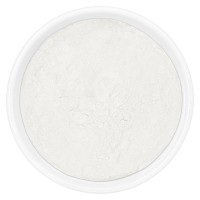What Are Binding Agents in Food?
Binding agents are functional food additives that connect loose or moist ingredients. They prevent separation, improve processing properties and ensure a uniform consistency – for example in doughs, plant-based alternatives or sauces.
Various binding agents are used in the food industry – including both traditional and modern, plant-based options. Commonly used examples include:
- Xanthan Gum (E 415) – temperature-stable, cold-soluble, ideal for dressings, creams, sauces and more
- Guar Gum (E 412) – a proven binder for doughs, patties and gluten-free baked goods
- Gum Arabic (E 414) – film-forming and emulsifying, used in sweets, beverages and coatings
- Agar-agar – derived from red algae, strongly gelling, e.g. for desserts, jellies or vegan alternatives to gelatine
- Carrageenan (E 407) – also derived from red algae, particularly suitable in combination with dairy products, e.g. for puddings and creams
- Locust bean gum (E 410) – from carob seeds, ideal for binding and texture improvement in gluten-free and vegan products
- Pectin (E 440) – extracted from fruit peels, traditionally used in jams, fruit spreads and confectionery
At DistrEbution, you’ll find carefully selected, plant-based binding agents in powder form – particularly well-suited for professional use.
Buy Binding Agents at DistrEbution
Our binding agents are available in powder form and integrate easily into existing processes – whether you're developing, producing or refining food products. We offer raw materials in verified quality, practical packaging sizes and with transparent labelling.
Now available to order online: plant-based binding agents with fast shipping, expert advice and attractive conditions for bulk buyers.
FAQ – Frequently Asked Questions About Binding Agents
What are binding agents used for in food?
Binding agents ensure that ingredients stick together and do not separate. They improve shape stability, simplify further processing and affect mouthfeel. Common applications include veggie patties, doughs, delicatessen products, desserts or sauces.
How do I dose plant-based binding agents correctly?
That depends on the specific product and application. Many binding agents are highly effective even in small amounts. Detailed dosing recommendations can be found in the respective product descriptions or technical data sheets.
What’s the difference between binding agents, thickeners and gelling agents?
Binding agents join ingredients, thickeners increase viscosity, and gelling agents create a firm, often spoonable structure. In practice, terms like "binding agent" and "thickener" are often used interchangeably, as they serve similar functions in food. For example, xanthan is both a binding agent and a thickener.
Are the binding agents suitable for industrial use?
Yes – our binding agents are food-grade, well documented and suitable for both industrial and artisan processing. We offer various packaging sizes and are happy to support you in selecting the right option.





